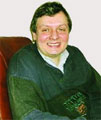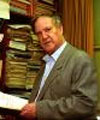
Das vergangene Jahrhundert wird oft als das der Industriegesellschaft bezeichnet. Zu ihrer Entwicklung trugen zum einen fundamentale Erfindungen bei, dann aber auch neuartige Produktionsmethoden, wie das Flie? band, und die extreme Arbeitsteilung im Sinne des Taylorismus. Zu Ende jenes Jahrhunderts zeichnete sich bereits die Formierung der Informationsgesellschaft ab. Die technischen Moglichkeiten, wie sie sich insbesondere in der Kernkraft und neuerdings in der Gentechnik wie auch in den Computerwissenschaften darstellen, werden allerdings nicht nur als Segen, sondern oft auch als Bedrohung empfunden. Damit einher gehen neuartige Anforderungen an menschliche Organisationen, wie den Staat und seine Institutionen mit seiner Gesetzgebung, der Gesundheitsfursorge, usw. und damit die Frage, wie die Organisationskonstrukte der modernen Gesellschaft die Problemstellung der Informationsgesellschaft bewaltigen konnen.








